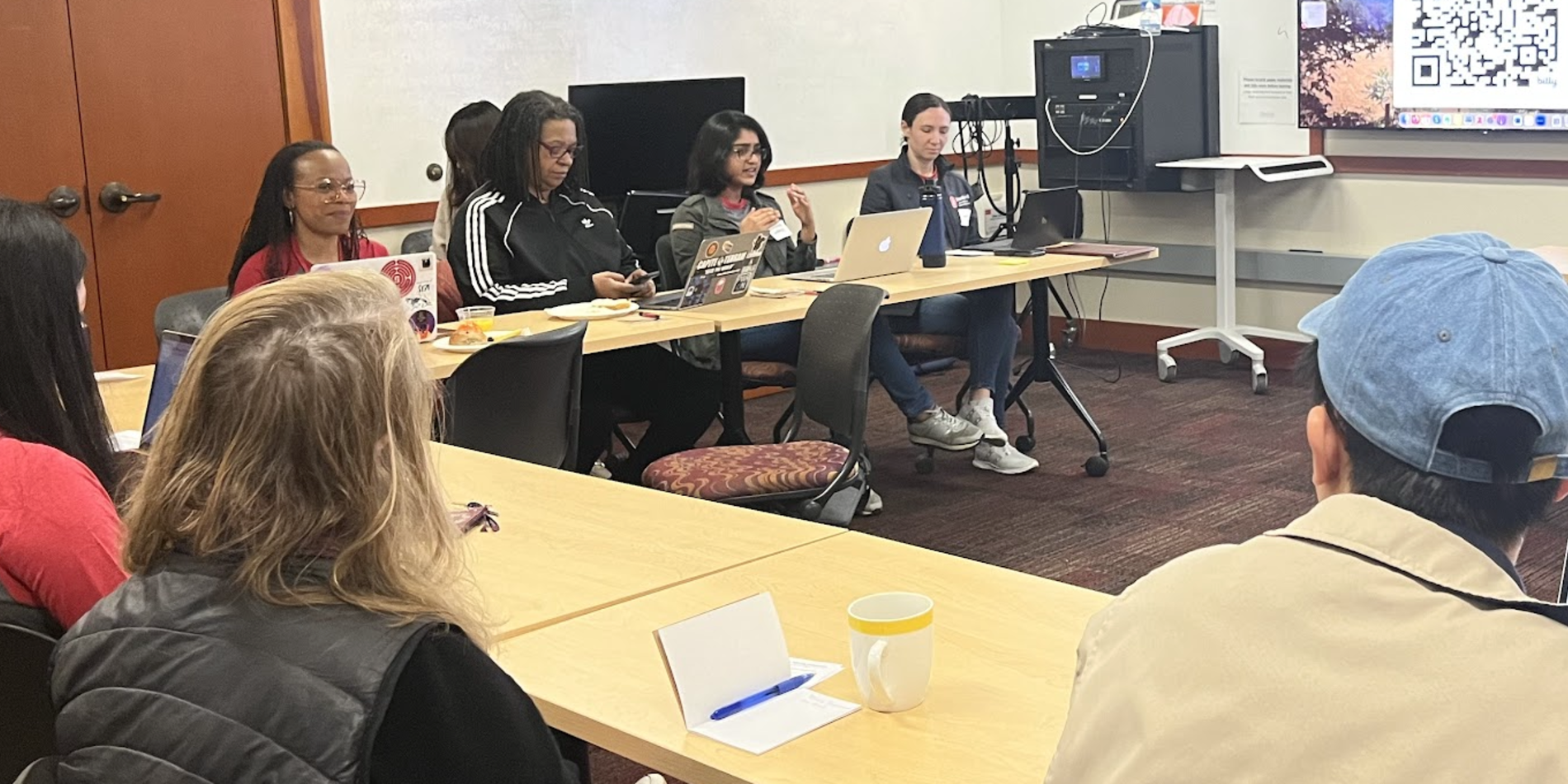Coordinator's Corner: What Does That “R” in PWR Really Mean? - Theorizing Rhetoric to Teach Rhetorical Analysis
By Chris Kamrath
On December 9th, PWR lecturers gathered for a workshop on teaching rhetorical analysis-an infrequently discussed, yet incredibly important assignment. Erica Cirillo-McCarthy, Erik Ellis, Cassie Wright and I each presented our own efforts to introduce students to rhetorical theory and prepare them to write an argument that analyzes the rhetoric of another text, space or object. If you missed the workshop, you can download the video today.
For most students, the RA is their first real writing assignment at Stanford. By virtue of this “firstness” the RA shapes how students understand college writing. It also frames how students think about rhetoric, and in turn their image of the “R” in PWR. At this workshop, we asked participants to consider how they frame rhetoric and rhetorical theory for their students in teaching rhetorical analysis. Simply outlining a few basic concepts, a list of tropes or a recitation of Aristotle’s argumentative appeals is insufficient given that most PWR1 students arrive on campus with some knowledge of ethos, pathos and logos. Thus, this workshop explored what we can teach students about rhetoric and rhetorical theory that goes beyond their high school exposure and considered how we can shape their understanding of why rhetoric matters. Each presenter discussed the value of making rhetorical theory a key part of our classroom activities and assignments.
At the workshop, I talked about the importance of showing students how different theories of rhetoric make rhetorical action visible (or invisible). A Bitzerian approach to rhetorical situations that arises in response to exigences is valuable because it helps students see the timeliness of rhetoric and the constraints that limit our rhetorical strategies. Such an approach directs us to focus on arguments directed toward decision-makers in response to a widely accepted problem in the world. For example, I ask students in groups to look at a series of texts related to reports about the protests at Standing Rock. Each day they look at similar texts in the context of a different, contrasting rhetorical theory; if we approach rhetorical situations from the prospective of constitutive rhetoric or framing, the rhetorical action happens not when we respond to an existing problem, but when we make some part of the world into a rhetorical problem. The specific theories that I offer students each quarter vary, but my goal is the same: I want them to see that the theory of rhetoric they use/choose shapes how they understand the writing that they encounter.
Drawing upon spatial rhetorics, Erica discussed place-based composition and her rhetorical spatial analysis assignment for PWR 1. Erica starts by setting up an analogy between mapping and storytelling. How, she asks, is mapping like storytelling? Or, in her words, “How does mapping ignore certain things and place value on others?” Drawing on theory from Nedra Reynolds, her RA assignment has students analyze spaces on campus, such as El Centro, as rhetorical. Check out her PowerPoint slides as you watch the video of the workshop.
Cassie provided us with a primer on feminist rhetorics and challenged us to see how feminist theory might offer students new approaches to reading texts. For instance, she highlighted how Krista Radcliff’s concept of eavesdropping can reposition the reader in relation to the object of analysis (or make visible multiple gendered ways of apprehending/hearing a rhetorical text). You can download her primer on Coursework today.
Erik talked about how he draws upon so-called expressivism—in its least solipsistic, most intellectually engaging forms—to help students understand and practice rhetoric. Erik provided a multimedia “tour” of theorists who inhabit his own thinking about rhetoric. Although expressivism is often placed against the rhetorical tradition, Eric showed how providing excerpts from an essay by Peter Elbow reframes how students grasp the rhetorical structure of texts. While we tend to see rhetorical organization spatially, Eric wants his students to see how writing and reading texts requires attention to the unfolding/temporal nature of the text. You can find this essay by Elbow, and Eric’s Presentation slides, in the Canvas folder for the workshop.
Please check out the videos of the workshop online through Stanford Box. You can also find our handouts, RA assignments, readings and presentation slides in a folder on Canvas.
My goal is for us to keep thinking and talking about the rhetorical analysis assignment. As we do, we need to ask how our own approach to teaching frames the writing practices and rhetorical decision-making in which students engage throughout the quarter. How does teaching the RA makes a case for the value of rhetoric?
Watch Videos of the Workshop Video
Access Handouts from the Workshop



